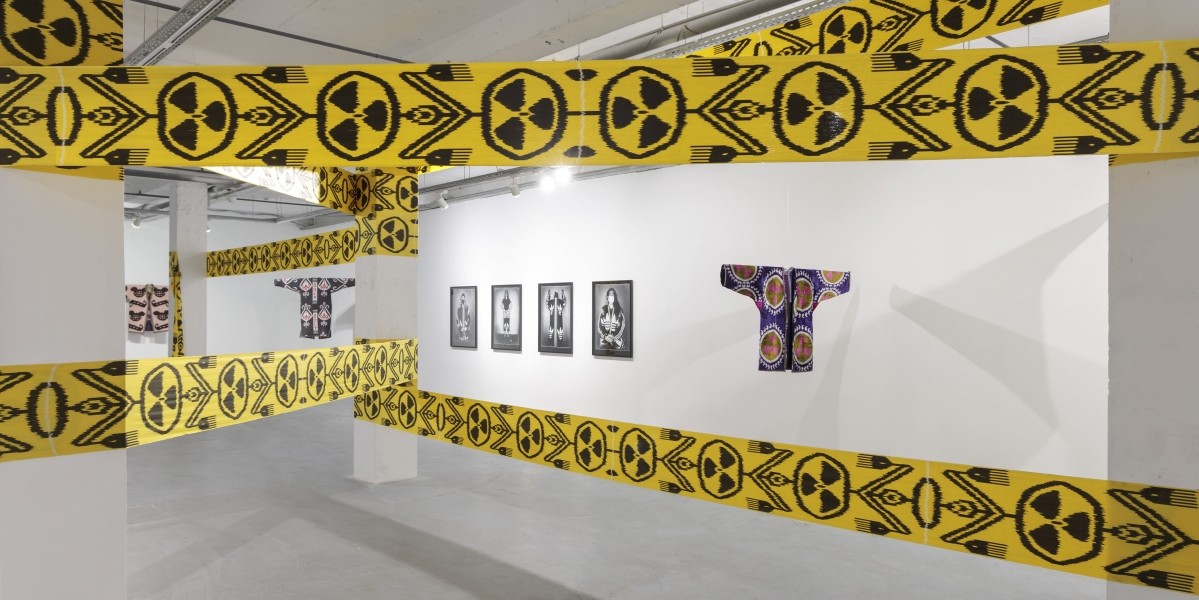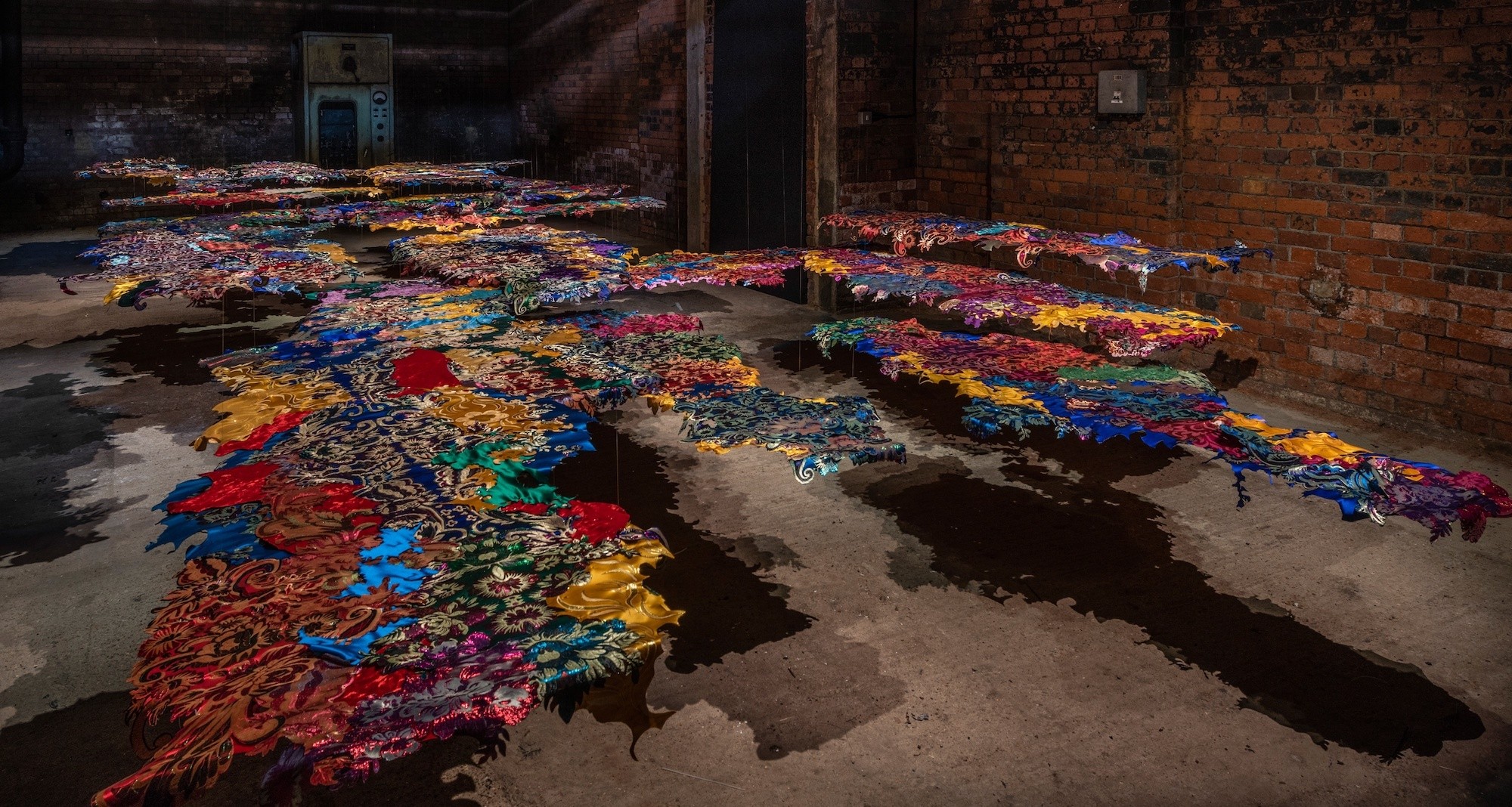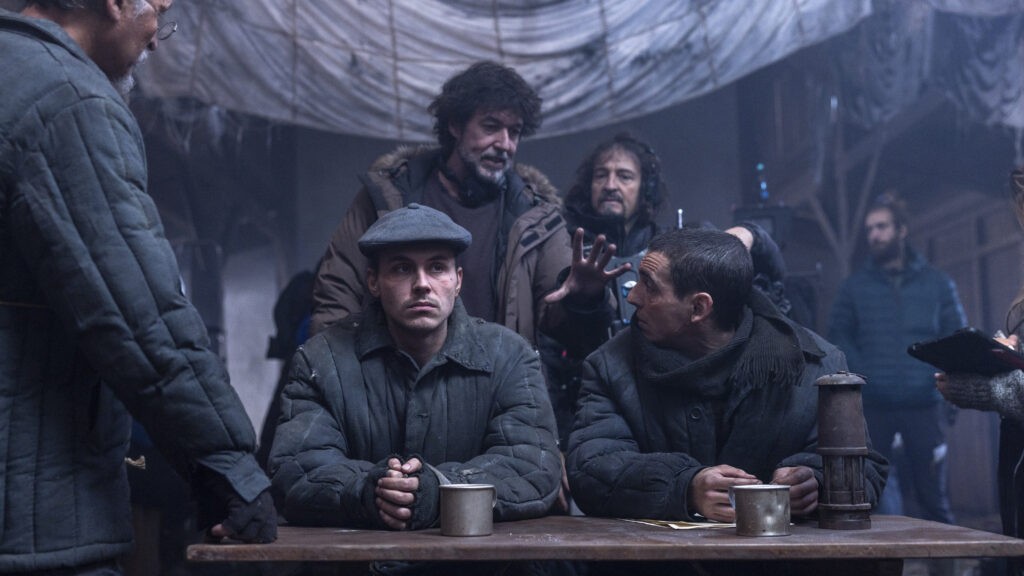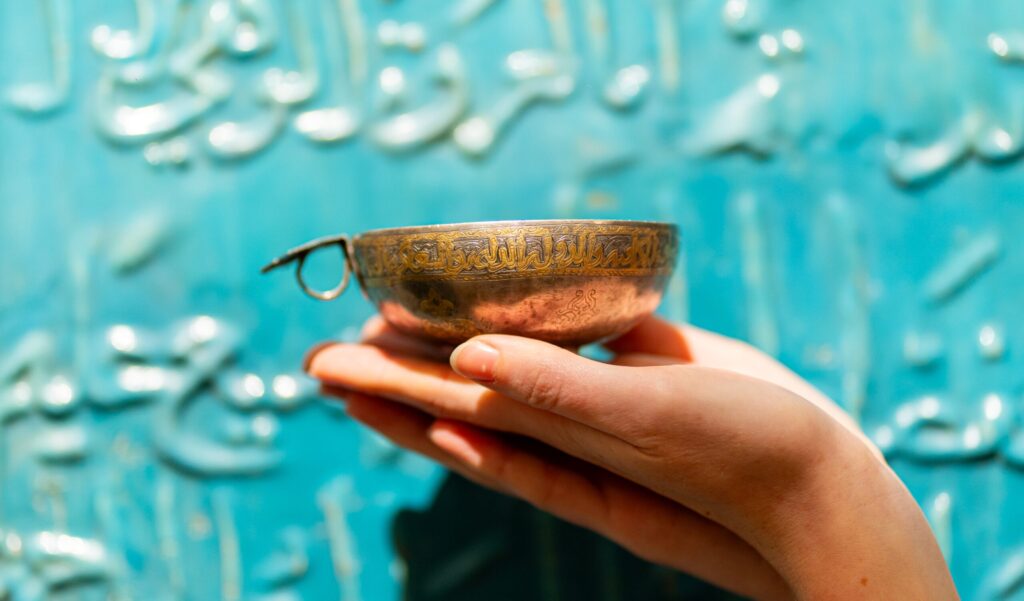“It’s difficult to be a point, but it’s easy to be a line, as everything in our world is moving.”
The quote by Soviet avant-garde artist Sergey Kalmykov became the title of a 2020 show by Kazakh artists Almagul Menlibayeva and Yerbossyn Meldibekov, the first exhibition by Almaty-based gallery Aspan to be staged in the UK.
This concept of continuous movement aptly describes the nine-year trajectory of the Aspan Gallery, founded and directed by Meruyert Kaliyeva. Maintaining its focus on contemporary Central Asian art, the gallery is constantly expanding and adapting to the dynamic of the international art world.

Dilyara Kaipova @Aspan
The story of how the gallery came into being is unconventional.
Meruyert Kaliyeva studied art in the UK, with the intention of practicing as an artist. She soon discovered, however, that the life of an artist was not for her and explained to TCA: “To be an artist, you must sacrifice your social and family life. You must disconnect from it all, and I was not willing to do that.”
At the same time, she noticed that unlike her, many individuals at art school seemed destined to become artists. “Some people don’t have the luxury of choice,” she recalls. “I felt that these people needed to focus solely on creating art, and I realised I could help unburden them from some practical preoccupations.”
After four years and a half working in auction houses in the UK, Kaliyeva finally decided to return to Kazakhstan. Having quickly realised the importance of supporting artists in a region where institutional support for contemporary art is extremely limited, she opened what is now the Aspan Gallery.
Kaliyeva’s mission was twofold. In tandem with developing the Central Asian art scene locally, through staging important historical exhibitions, publishing books and catalogues, and commissioning artists, she also concentrated on disseminating knowledge of Central Asian art abroad.
A case in point is Aspan’s recent, significant donation to the Stedelijk Museum in Amsterdam. The donation was curated by Robbie Schweiger, based on research conducted in Kazakhstan, Kyrgyzstan, and Uzbekistan, and with input from Kaliyeva, connections were drawn between Central Asian artists and the Stedelijk’s permanent collection.
The Times of Central Asia spoke to Kaliyeva about both the donation and the growth of the Kazakh art scene over the past few years.
TCA: Why did you choose the Stedelijk Museum in Amsterdam for such a significant donation?
MK: We were keen to have some of our artists represented in major institutions and identified three museums as contenders. The first on the list was the Stedelijk, which already held a collection of Central Asian art. The donation comprised 22 works by 13 artists from Kazakhstan, Kyrgyzstan, and Uzbekistan, spanning almost fifty years, from 1974 to 2020.
Works from the 1970s and 1980s, created by artists associated with the underground art scene of the former Soviet republics, were complemented by work made after these republics gained independence in the early 1990s., in which artists explored national identities while simultaneously attempting to keep abreast with the international art world.
TCA: In addition to museums, are collections of Central Asian art being developed in the private sector?
MK: For a long time, the main collectors of Central Asian art were foreign institutions and individuals, but things are rapidly changing. Kazakhstan is developing a solid collector base. Half of our sold-out show by Gulnur Mukazhanova in 2021, for example, was bought by local collectors. More and more Kazakh collectors are travelling to international art fairs and in the last few years, have accounted for some 30 percent of our sales.
Central Asia’s first contemporary art museum will open next year in Almaty. Funded by Kazakh collector and philanthropist Nurlan Smagulov, the Almaty Museum of Arts has been actively buying works by Central Asian contemporary artists alongside that by international ‘stars’. Another private museum, due to open in Caucasus in a few years’ time, is also building a very strong collection of Central Asian art. It is very encouraging to see such growing interest in our artists’ work not only from local collectors, but also from collectors from further afield who provide very important links.

Almagul Menlibayeva @ Aspan
TCA: You returned to Kazakhstan after living in London for many years. How had the art scene changed?
MK: What surprised me the most, was the number of Central Asian artists represented by galleries in Milan, London, Brussels, Hong Kong, New York, but despite being included in biennales and museum collections, their work was not shown anywhere in Central Asia. Artists such as Vyacheslav Akhunov, Said Atabekov, Yerbossyn Meldibekov, Almagul Menlibayeva, Yelena and Viktor Vorobyev, Gulnara Kasmalieva and Muratbek Djumaliev, Sergey Maslov, Rustam Khalfin and so on, I call “Astral Nomads,” because they are like isolated stars.
Working in their own studios, they only met up at international exhibitions and in the absence of local exhibitions of contemporary art, all these artists were disconnected from each other.
I started by showing artists already fairly established on the contemporary art scene and then gradually began to include younger artists. In 2021, we hosted four solo shows of young female artists – Saodat Ismailova, Dilyara Kaipova, Gulnur Mukazhanova and Bakhyt Bubikanova. Their works are now held in many museum collections and have been exhibited at documenta, the Venice Biennale, the Gwangju Biennale, the Sharjah Biennale etc.

Gulnara Kasmalieva @Aspan
TCA: How has the gallery evolved and how do you select your artists?
MK: I founded the gallery in 2015 and at first, staged pop-up exhibitions, including two midcareer retrospectives of Yerbossyn Meldibekov and Yelena and Viktor Vorobyev, curated by Viktor Misiano at the Kasteev Museum of Arts in Almaty. The gallery’s focus has always been Central Asian contemporary art and as I was pretty much the only gallery showing contemporary art, I was basically able to approach any artists I wanted to work with.
We have recently started to curate more historical exhibitions such as a non-selling show of Lidiya Blinova, who was instrumental in the development of the contemporary art scene in Kazakhstan but died prematurely in 1996, leaving almost no physical works behind her.
We restaged some of her most important installations and by accident found a hitherto unknown body of drawings and sketches that we exhibited for the first time. Two years ago, we staged a retrospective of Sergey Maslov and managed to secure loans from museums in northern Kazakhstan, which together with the reconstruction of Maslov’s rocket-yurt installation, made the show very special.

Gulnur Mukazhanova @Aspan
TCA: In terms of market demand, is there a growing interest in artists from Central Asia?
MK: There is a definite growing interest among museums and collectors towards our artists, but it is quite rare for them to regard Central Asia as a geographical region. I would say that while museums and collectors look at certain artists, who happen to be from Central Asia, there aren’t many creating a ‘Central Asian collection’, in the same manner as collections of ‘African art’ or ‘Chinese art’.
M HKA and Stedelijk Museum, both with collections of Central Asian art, are exceptions. I find it quite positive that artists escape being labelled by the region they come from, even though they all work within a local context in a very deep and meaningful way.
TCA:
MK: Over the last ten years, there have been a lot of changes in Kazakhstan’s art scene. The way people consume news has totally changed with the advance of digital media platforms; attention span has been shrinking and we have fewer and fewer lengthy pieces on art.
The rise of social media has produced a new way of consuming art, and I think we should embrace it. Social media is attracting more people outside the art world to exhibitions, regardless of whether they just turn up for an opening or come by later and post something on Instagram.
I feel that just like people who go on hikes to portray themselves as outdoorsy types, people visit galleries and museums to convey their interest in culture. For me, it doesn’t matter if they come to a show simply because our paintings provide a beautiful background for a selfie. They might initially come for that reason but in the process, they become accustomed to art. And maybe, next time, they’ll be interested to stay longer, or come back with a friend. It all boils down to slowly getting people through the door, and I’m confident it will grow from there.









